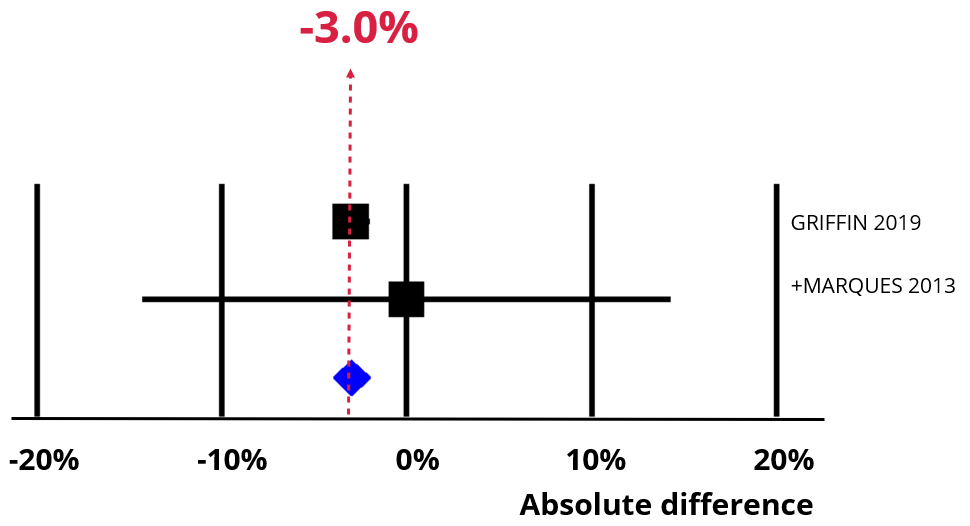As opposed to the usual follow-up, participants receive a diary where they can record their experience.
Addition of a diary to usual follow-up probably reduces retention slightly.
An decrease of -3% (95% confidence interval = -4% to 2%).
GRADE Moderate certainty.
We recommend that trialists add a diary to usual follow-up in the context of an intervention evaluation.
See Resource bundle below for details on how to add a diary to usual follow-up.
Imagine initial retention is 65% of those approached. You have a trial with 100 participants that needs responses from 80 to meet its statistical power calculations. Retention of 65% means that you will be 15 responses short (see chart below).

Now imagine adding a diary to usual follow-up. The chart below shows the impact of an absolute decrease of -3% (95% CI = -2% to -4%). Retention is now 62%, which means our best estimate is that you would now be 18 responses short.


